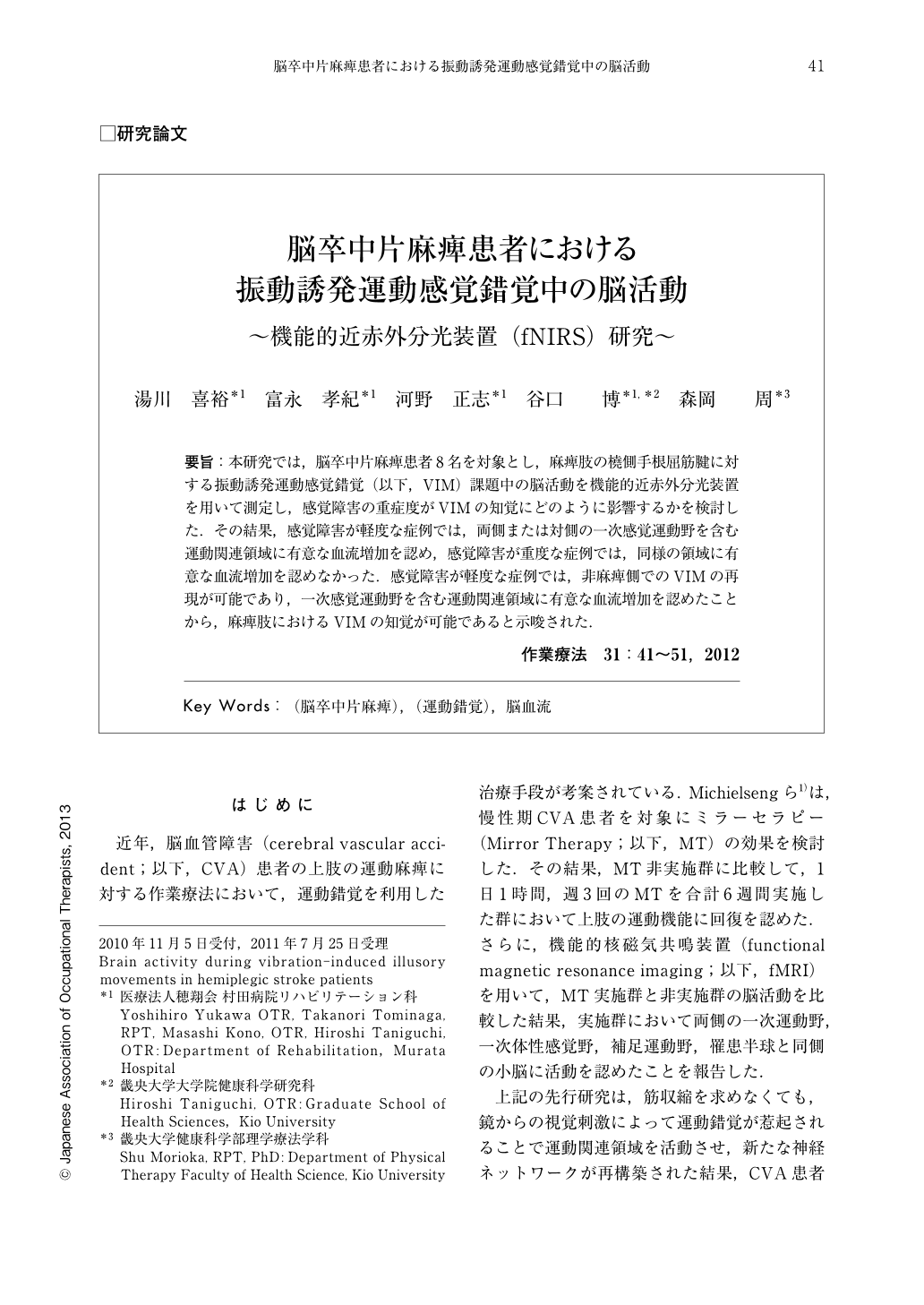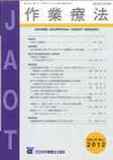Japanese
English
- 販売していません
- Abstract 文献概要
- 1ページ目 Look Inside
- 参考文献 Reference
- サイト内被引用 Cited by
要旨:本研究では,脳卒中片麻痺患者8名を対象とし,麻痺肢の橈側手根屈筋腱に対する振動誘発運動感覚錯覚(以下,VIM)課題中の脳活動を機能的近赤外分光装置を用いて測定し,感覚障害の重症度がVIMの知覚にどのように影響するかを検討した.その結果,感覚障害が軽度な症例では,両側または対側の一次感覚運動野を含む運動関連領域に有意な血流増加を認め,感覚障害が重度な症例では,同様の領域に有意な血流増加を認めなかった.感覚障害が軽度な症例では,非麻痺側でのVIMの再現が可能であり,一次感覚運動野を含む運動関連領域に有意な血流増加を認めたことから,麻痺肢におけるVIMの知覚が可能であると示唆された.
The present study measured brain activity in 8 hemiplegic stroke patients during tasks involving vibration-induced illusory movements (VIM) using functional near-infrared spectroscopy (fNIRS). The relation between the severity of sensory deficit and perception of VIM was examined with regard to the tendon of the flexor carpi radialis muscle of the wrist of the hemiplegic limb. Results revealed that patients with mild sensory deficits exhibited significantly increased blood flow (p<0.01) in motor-related areas such as the primary sensory motor cortex on both sides or on the opposite side, while patients with severe sensory deficit had no significant increase in blood flow in those areas. Patients with mild sensory deficits were able to replicate VIM using the non-hemiplegic limb, and had significantly increased blood flow in motor-related areas such as the primary sensory-motor cortex. Thus, the results indicate that hemiplegic stroke patients with mild sensory deficits could perceive VIM with the hemiplegic limb.

Copyright © 2012, Japanese Association of Occupational Therapists. All rights reserved.


